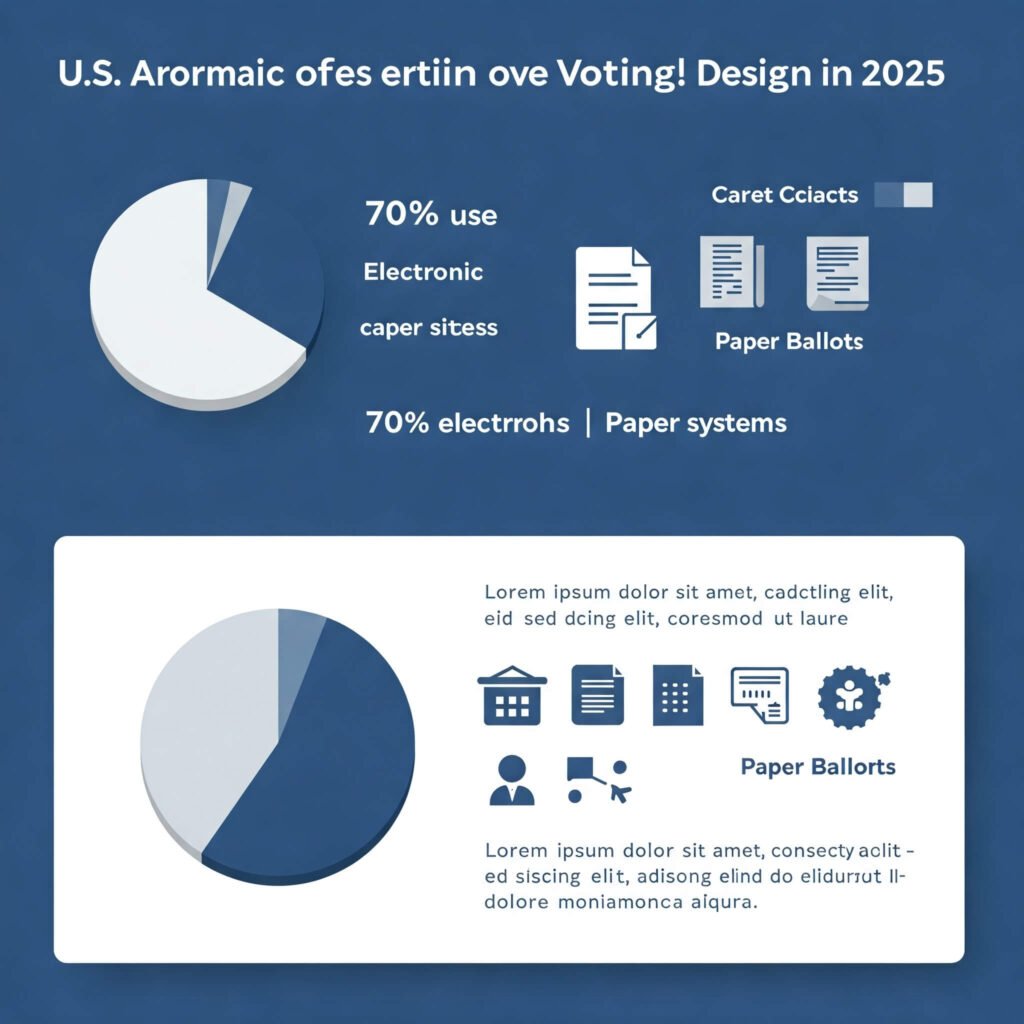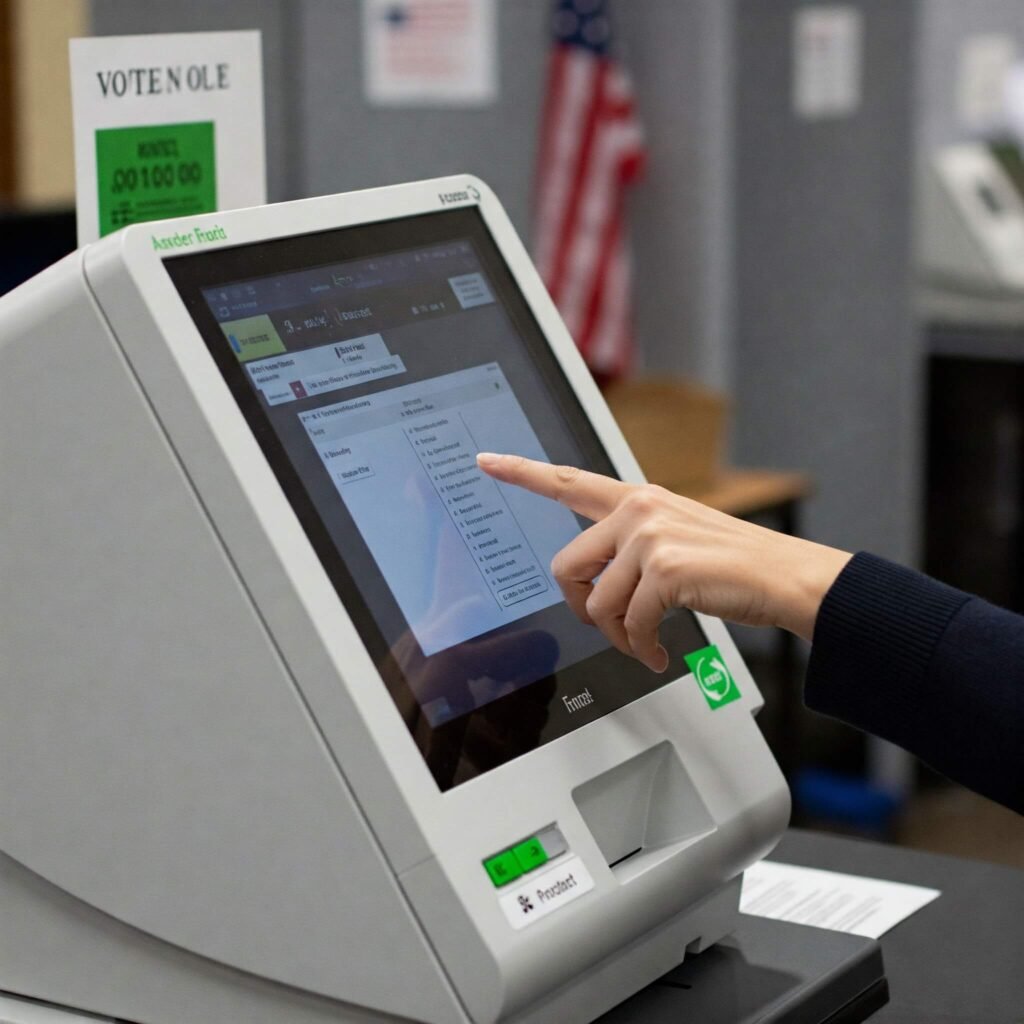As the 2025 U.S. elections draw near, many voters are asking, How secure are the 2025 elections? With rapid advancements in voting technology and rising concerns about cybersecurity, understanding the safety of U.S. voting tech is crucial. Therefore, this article explores the systems powering the 2025 elections, highlighting their strengths, vulnerabilities, and protective measures. From electronic voting machines to paper ballots, we’ll explain everything clearly yet provide deep insights.
Why Voting Tech Security Matters in 2025
The security of U.S. voting tech directly shapes the integrity of democracy. For instance, in 2025, millions of Americans will vote using electronic machines, paper ballots, or mail-in systems. However, each method presents unique security challenges and safeguards. Moreover, as cyberattacks grow more sophisticated, ensuring voting tech remains secure is a top priority for election officials.
According to the Brennan Center for Justice, over 70% of U.S. voters in 2024 relied on electronic voting systems. While these systems streamline vote counting, they also introduce risks like hacking or software errors. Consequently, understanding these risks empowers voters to trust that their votes count.

How Secure Are Electronic Voting Machines?
Electronic voting machines are central to modern U.S. elections, but how secure are the 2025 elections with these devices? Let’s dive into their key security features.
Robust Encryption and Software Updates
For example, most voting machines in 2025 employ advanced encryption to safeguard vote data. Companies like Dominion Voting Systems and Election Systems & Software (ES&S) regularly update software to address vulnerabilities. Additionally, these updates undergo rigorous testing by federal and state agencies to meet security standards.
Air-Gapped Systems
Furthermore, many voting machines are “air-gapped,” meaning they lack internet connectivity. This isolation significantly reduces the risk of remote cyberattacks. However, air-gapped systems aren’t entirely secure—physical access to machines could pose risks if protocols are lax.
Potential Vulnerabilities
Despite these protections, challenges remain. For instance, a 2023 MIT Election Data and Science Lab study revealed that older machines in some states lack modern security features, making them more vulnerable to tampering. As a result, election officials are prioritizing replacements, though progress varies by state.

The Role of Paper Ballots in Election Security
Paper ballots are regaining popularity as a reliable backup to electronic systems. So, how secure are the 2025 elections when paper ballots are used?
Why Paper Ballots Are a Gold Standard
Firstly, paper ballots offer a verifiable record, which can be audited if issues arise. For example, states like Georgia and Pennsylvania mandated paper backups for all electronic systems in 2024, a trend continuing into 2025. According to the Verified Voting Foundation, 95% of U.S. voters in 2025 will access paper-based voting options.
Auditing and Recounts
Moreover, post-election audits compare paper ballots to electronic tallies to ensure accuracy. In Michigan’s 2024 election, for instance, a statewide audit confirmed results within a 0.01% margin of error. Thus, audits significantly enhance voter confidence.
Challenges with Paper Ballots
However, paper ballots face challenges. Mishandling, improper storage, or chain-of-custody errors can undermine their reliability. Therefore, training poll workers and enforcing strict protocols are vital for security.
Cybersecurity Measures for the 2025 Elections
Cybersecurity is critical to answering how secure the 2025 elections will be. Here’s how officials are tackling digital threats.
Federal and State Collaboration
Firstly, the Cybersecurity and Infrastructure Security Agency (CISA) collaborates with state officials to conduct security assessments and share threat intelligence. For example, CISA’s #Protect2025 campaign equips states to combat ransomware and phishing attacks.
Penetration Testing
Additionally, many states will conduct penetration testing before 2025 to identify system weaknesses. These simulated cyberattacks help officials address vulnerabilities proactively. As a result, voting systems become more resilient.
Public Awareness Campaigns
Furthermore, voters contribute to election security. CISA and groups like the National Association of Secretaries of State are launching campaigns to educate voters about misinformation and secure voting practices. Thus, public awareness strengthens the overall system.

What Can Voters Do to Ensure Their Vote Counts?
While officials manage technical security, voters can take steps to support how secure the 2025 elections are. Here are practical tips:
- Verify Your Registration: Check your status on your state’s election website to ensure accuracy.
- Vote Early or by Mail: Early or mail-in voting reduces polling station pressure and allows time to fix issues.
- Report Suspicious Activity: If you notice anything unusual, alert poll workers or election officials immediately.
- Stay Informed: Follow trusted sources like CISA or your state’s election office for reliable updates.
The Future of Voting Tech Security
Looking ahead, how secure the 2025 elections are will influence future innovations. For instance, blockchain-based voting and AI-driven threat detection are under exploration, though not yet widespread. Meanwhile, the focus remains on strengthening current systems through audits, cybersecurity, and voter education.
In conclusion, the 2025 elections are poised to be highly secure, thanks to advanced technology, paper backups, and robust cybersecurity. By staying informed and engaged, voters can further ensure a trustworthy process.

